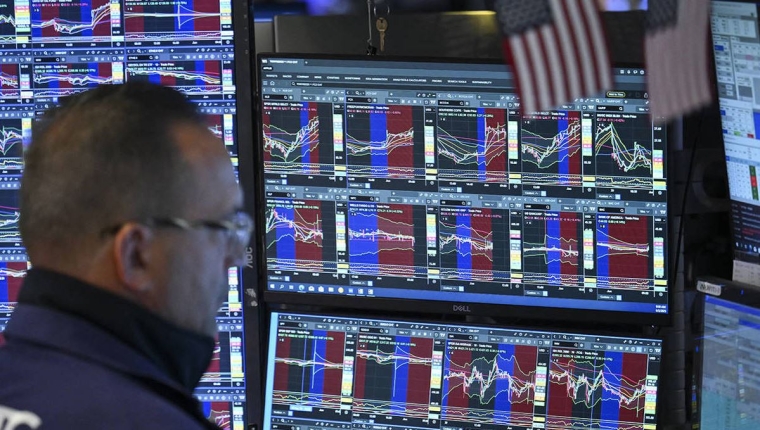
Sovereign bond yields have been rising sharply around the world, driven by growing concerns over US President Donald Trump’s economic policies and an increasingly uncertain global outlook. In less than a month, the yield on ten-year Treasuries jumped by 50 basis points to 4.6%. And in May alone, the 30-year Treasury rate rose by 30 basis points, briefly topping 5%.
At least four key factors are driving this upward trend: weakening long-term government credibility; growing doubts about the effectiveness of current US policies; deepening domestic and international political uncertainty; and sentiment-fueled market volatility.
Above all, rising bond yields reflect a profound loss of confidence in US economic policymaking (and this at a time when just 41% of Americans trust their government). In fact, while Trump’s “big, beautiful” budget bill is projected to increase the federal deficit by $3.8 trillion and add $3.3 trillion to the national debt over the next decade, concerns over the sustainability of US fiscal policy have been building for years.
As the United States approaches its debt ceiling, the Congressional Budget Office projects that deficit spending will reach $1.9 trillion in 2024-25 – the third-highest in American history. The annual federal deficit already exceeds 6% of GDP, well above the 3.8% average of the past 50 years, and is expected to remain elevated through 2035. Meanwhile, gross federal debt is projected to rise from 123% to 135% of GDP over the next decade.
America’s unsustainable fiscal trajectory threatens the government’s ability to fund core entitlement programs such as Social Security and Medicare, both of which could become insolvent within the next ten years. Moody’s recent decision to downgrade US sovereign debt from AAA to Aa1 underscores these structural fiscal challenges and acknowledges that, while unlikely, the possibility of a US default cannot be dismissed.
In an increasingly de-globalised world, the situation is further complicated by the fact that key geopolitical rivals like China hold significant amounts of dollar-denominated debt. This gives them political and economic leverage, leaving the US more vulnerable and heightening market uncertainty.
While the Trump administration’s planned tax cuts should, in theory, boost economic growth by stimulating investment and consumer spending, markets increasingly fear that they will instead erode government revenue and push Treasury yields even higher, limiting the Federal Reserve’s ability to cut interest rates or even triggering hikes. Moreover, higher long-term rates could offset any stimulus effect Trump’s budget may have, potentially slowing economic growth.
The prospect of further tariff increases is also weighing on the global economy. The International Monetary Fund recently lowered its global growth forecast for 2025 from over 3% to 2.8%, citing heightened trade tensions. With persistent inflation and slowing growth raising the risk of stagflation, central banks face a difficult trade-off: easing monetary policy might fuel price increases, but tightening could curb employment and dampen growth.
Another key driver of rising Treasury yields is the fear of political instability. In the US, Trump’s budget bill – recently passed in the House of Representatives and now advancing to the Senate – may deepen divisions within the Republican Party, especially between Trump’s MAGA allies and fiscal hawks like Senators Rand Paul and Ron Johnson.
Globally, the ongoing wars in Ukraine and Gaza have widened geopolitical fissures. Typically, that would trigger a flight to safety and push Treasury yields lower, but the continued rise in Treasury rates suggests that markets are assigning a higher risk premium to US government debt.
These trends raise fundamental questions about the dollar’s future as the world’s reserve currency and Treasuries’ status as the global benchmark for risk-free assets. The latest Treasury auction drew weaker-than-expected demand, as investors are increasingly turning to alternative stores of wealth like gold.
Some are even turning to cryptocurrencies. Crypto exchange-traded funds, in particular, have made it easier for investors worried about inflation and fiscal instability to allocate capital to digital assets, with Bitcoin ETFs reportedly attracting more than $9 billion in just over a month. Ironically, the administration’s efforts to legitimise crypto may be accelerating that shift, potentially undermining the dollar’s global dominance.
All of this spells trouble for the US economy. Rising Treasury yields could ripple through financial markets and the real economy alike, raising borrowing costs for households and businesses, discouraging investment, and reshaping portfolio decisions. The outlook is anything but reassuring.
Dambisa Moyo, an international economist, is the author of four New York Times bestselling books, including Edge of Chaos: Why Democracy Is Failing to Deliver Economic Growth – and How to Fix It. This content is © Project Syndicate, 2025, and is here with permission.

We welcome your comments below. If you are not already registered, please register to comment.
Remember we welcome robust, respectful and insightful debate. We don't welcome abusive or defamatory comments and will de-register those repeatedly making such comments. Our current comment policy is here.